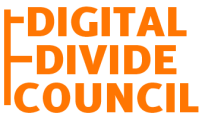What is the Digital Divide?
The digital divide is the gap that exists between individuals who have access to modern information and communication technology and those who lack access. There are three key stages that influence digital inequality worldwide.
Digital inequality is evident between communities living in urban areas and those living in rural settlements; between socioeconomic groups; between less economically developed countries and more economically developed countries; between the educated and uneducated population.
Individuals with access to a broadband connection can be digitally split. How? Low-performance computers, limited broadband speeds and limited access to subscription-based content widen the gap.
3 Types of Digital Divide
There are numerous types of the digital divide that influence our efforts in accessing the internet. Some of the vivid gaps in digital inequality include:
1. Gender Divide
According to a 2013 report, the internet gender gap is striking especially in developing countries. Though mobile connectivity is spreading drastically, it is not spreading equally. Women are still lagging.
Men in low-income countries are 90% more likely to own a mobile phone than women. This translates to 184 million women who lack access to mobile connectivity. Even among women owning mobile phones, 1.2 billion women in low and mid-income countries have no access to the internet.
2. Social Divide
Internet access creates relationships and social circles among people with shared interests. Social media platforms like Twitter and Facebook create online peer groups based on similar interests.
More than ever internet usage has influenced social stratification which is evident in societies among those that are connected to the internet and those that are not. Non-connected groups are sidelined since they don’t share in the internet benefits of the connected groups.
3. Universal Access Divide
Individuals living with physical disabilities are often disadvantaged when it comes to accessing the internet. They may have the necessary skills but cannot exploit the available hardware and software.
Some parts of the world will remain segregated from the internet and its vast potential due to lack of digital literacy skills, low education levels, and inadequate broadband infrastructure.
Causes of the Digital Divide
Even though access to computers and the internet continues to grow, the digital divide dramatically also continues to persist at an alarming rate due to the following:
Education
Education is a significant investment in healing the digital divide. Low literacy levels are widening the digital inequality gap. College degree holders are perceived to be 10X more likely to tap into the full potential of the internet and computers in their day to day lives compared to individuals with high school education or lower.
Income Levels
The income gap plays a considerable role in magnifying the digital divide. High-income earners ($75,000) are 20X more likely to access the internet than low-income earners ($30,000).
Wealthy families are 10X more likely to own computers and at home high-speed internet connection than low-income families. For low-income population money is scarce. Their earnings are channeled towards basic needs. They view technology as a luxury.
Geographical Restrictions
More economically developed countries have access to a wide variety of technology and high-speed broadband connection because of the richness of their economies. Less economically developed countries lack the necessary technology and infrastructure to set up a high-speed internet connection.
In-country geographical restrictions also widen the digital divide. Urban regions are more likely to have access to 4G or fiber optic internet than rural or mountainous zones.
Motivation and General Interest
There is a portion of the global population that has the necessary income; education and computer literacy but have zero interest to learn about computers and the potential of the internet. Some view it as a luxury. Another group finds it too complicated to comprehend.
Digital Literacy
Developed nations have more comprehensive access to computers among other devices and high-speed internet connection. Students who attend schools with sufficient computers and learn the necessary digital skills have an upper advantage over students who are not exposed to these technologies at an early age.
The lack of physical access to technology especially in developing countries widens the gap between the information rich and information poor.
Impact of the Digital Divide
Digital inequality has created significant distinctions among societies worldwide. Some of the most vivid outcomes generated by the digital divide include:
Impact of Digital Divide on the Economy
Telecommunication services boost economic growth. Broad use of the internet enables an economically productive nation. People can engage in online shopping eliminating the hustle of commuter traffic. Paperless transactions are a convenient approach to creating economic empowerment. The economic gap widens especially with developing countries which lack adequate ICT integration.
Impact of Digital Divide on Education
The internet is a rich library of information. More than ever there are numerous educational platforms where you can learn advanced skills. Access to ICT has been linked to academic success and excellent scientific research. Education empowers the mind. It is crucial to keep up with this dynamic sector for remarkable success to an individual and society.
Impact of Digital Divide on Social Spheres
Internet access drives communication. Social media platforms such as Facebook create engagement, build relationships, and connect us to family and friends. We can access information faster than relying on traditional newspapers.
Art and music have been dramatically revolutionized by technology. These are benefits that internet deprived societies lack. Elimination of the digital divide is essential to empower developing countries.
Impact of Digital Divide on Society
The digital divide has contributed to the segregation of individuals in the society including ethnicity, age, race, and gender. Technology creates new alignments among individuals with access to the internet and those without access. Those with limited access continue to lag hindering their growth and development.
Digital Divide in Education
The technology divide between students and schools is alarming. The following four categories provide insight into setbacks in our education sector that magnify the digital inequality gap even further.
Schools that the necessary technology but lack internet access
According to education superhighway, 17.6 million students require the minimum bandwidth to sustain digital learning. The FCC E-rate program is helping schools to purchase affordable broadband connection and ensure schools are connected to the web.
This is made possible by providing 100 kbps to each student, Wi-Fi connected classrooms, fiber connections, and subsidized data plan packages. Schools in rural areas lack the pre-existing infrastructure because of low return on investments given the small customer base and the difficulty in installing fiber optic cables.
Lack of up to date devices
According to the U.S Department of labor, 77% of all U.S. jobs will require an individual to have computer skills by 2020. How can we better prepare the students for the future if they lack access to modern technology?
Students need modern devices such as chrome books, laptops, and tablets for advanced learning at-risk students who lack the necessary technology lag in their studies and suffer from poor grades.
Teachers lack technology-based skills
Sufficient technology and the high-speed broadband connection is not enough to bridge the digital divide in Education. Many teachers who lack training in using these devices cannot facilitate active digital learning for students.
According to Samsung Electronics Africa, 60% of teachers feel they are ill prepared to use and teach about technology to their students. For engaging, relevant and focused learning we need to invest in the professional training of our teachers.
Varying teaching styles and levels of engagement
Affluent schools combine classroom learning with real-life problem solving by integrating modern technology in their curriculum. Students are tutored on conducting online research, video creation and using tools such as Google Docs.
Students in poor schools use computers for presentations of the existing material, and there is no in-depth learning of technology. Affluent schools, on the other hand, encourage students to conduct online research and perform statistical analyses.
The digital divide in the U.S:
A quarter of the U.S population is starved of broadband connection. Most people cannot afford the expensive monthly data plan charges. A meager 56% of households in the U.S earning less than $35,000 per year have home internet connection compared to 92% of households earning $75,000 or more per year. This technology divide hurts students.
They lag behind their studies and cannot compete effectively with their peers. They miss out on improving their economic situation and repeat the poverty cycle.
Although Low-cost computers and Chromebook laptops have replaced textbooks in most schools, learning hits a dead end when students head home to no internet access. America loses over $130 million each day to the digital divide when a person does not connect to the internet according to Deloitte.
In Connoton Valley, most households access the web using a Satellite dish which is expensive and connects to the internet at snail-speed. Most of the disconnected residents lack the necessary digital literacy skills.
According to the FCC, 24.7 million U.S citizens lack broadband connection, especially in rural areas. In Ferry County, 2% of the population access broadband connection according to Microsoft. There are critical steps if properly implemented will aid in closing America’s digital divide.
Digital Divide Projects
Various projects are being implemented to build on the knowledge gap and bridge the digital divide gap among societies. They include:
Wi-Fi Partnerships
Wi-Fi partnerships aim to bridge the internet usage gap. For example the Clark County school district partners with the Las Vegas chamber of commerce to create free quality Wi-Fi directory for students. Students can now access Wi-Fi away from school. Learning takes place anywhere, anytime.
Internet.org by Facebook
Internet.org is the brainchild of Facebook to provide a solution to access free material on the internet. Through their app, people can access web pages on health, local information and job opportunities. This initiative is currently thriving in Africa, Asia, and Latin America.
Linux4Africa
Linux4Africa works to bridge the digital divide between developed and developing nations with a focus on Africa. This is by ensuring access to information technology. Linux4Africa collects used and discarded computers in Germany, Ubuntu software and Terminal Server Project which is open sourced and supports schools and essential institutions such as hospitals with the necessary facilities.
One Laptop per Child Project (OLPC)
OLPC was introduced in Massachusetts Institute of Technology (MIT) in 2005 and rolled out as a nationwide policy in 2007. The aim was to fund every public school student from grade 1-6 with a laptop or “green machine” operating on Linux based OS.
By 2010 this project was extended to high school students and has dramatically reduced lack of access to learning material by students. Tremendous progress has been made by countries implementing strategies to ensure equal digital access across societies.
Bottom line
Our lives rotate around digital platforms. We live, learn, work and play technology. A computer-savvy workforce is crucial for the achievement of a country’s economic and development blueprint.

